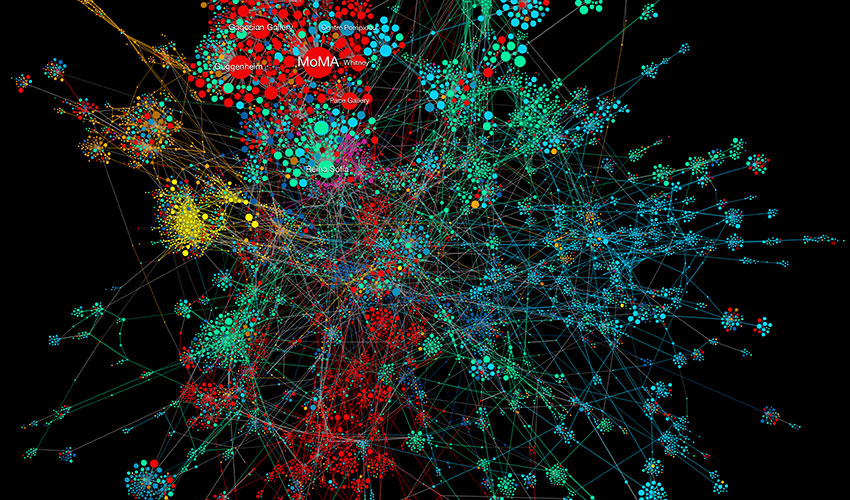Text by CLOT Magazine

A new exhibition at the Ludwig Museum in Budapest presents the twenty-five years of research into the visual language of networks by Professor Albert-László Barabásithe. Hidden Patterns will be presented through highly intricate visualisations of complex networks produced by the BarabásiLab, (a collective of scientists and designers led by the Professor), using state-of-the-art technology—including data sculptures, augmented reality, virtual reality, and a drawing robot.
With theories of networks more relevant and popular than ever, this presentation of Prof Barabásithe’s body of work will bring another twist and reexamination of the topic. Nowadays, we produce more data per day than previously generated in a decade. New disciplines have been evolving and expanding to cope with this amount of data: the visualisation of specific nodes and networks, of parameters and patterns. Network research and network visualization have proved to be one of the most promising scientific methodological innovations in recent years/decades, which seems to be an effective tool for the study of cultural and social phenomena, including the art scene.
Professor Albert-László Barabási is a network scientist, fascinated with a wide range of topics, from unveiling the structure of the brain to treating diseases using network medicine, from the emergence of success in art to how science really works.
His work has helped unveil the hidden order behind various complex systems using the quantitative tools of network science, a research field that he pioneered, and led to the discovery of scale-free networks, helping explain the emergence of many natural, technological and social networks. Since 1994, the BarabásiLab has developed the visual vocabulary of interconnectivity, relying on materials and forms of expression appropriated from the art world and science.
An integral part of this retrospective from BarabásiLab, curated by József Készman, will be the studies and engagement within the art world, which aim to utilise network science to support the sector. Stemming from his lifelong interest in art, Barabási and his team have applied big data and network science to the art world, to explore the connected landscape of museums, galleries and creative practitioners today, understanding and visualising the forces that shape artists’ careers.
One of BarabásiLab’s investigations into the art world, titled The Art Network, explores links between artists and institutions and enables us to examine the factors that shape an artist’s future trajectory.
The resulting representations are intentionally aesthetic and vividly describe the connections and relationships behind the systems they investigate, unveiling the hidden patterns that shape the complexity of nature and society. By revealing and analyzing these hidden patterns, Barabási’s work demonstrates the defining role interconnectedness plays in complex systems, from nature and society to culture and art.
The exhibition will be open from 10 October 2020 until 17 January 2021, when it will move to ZKM in Karlsruhe, Germany.






